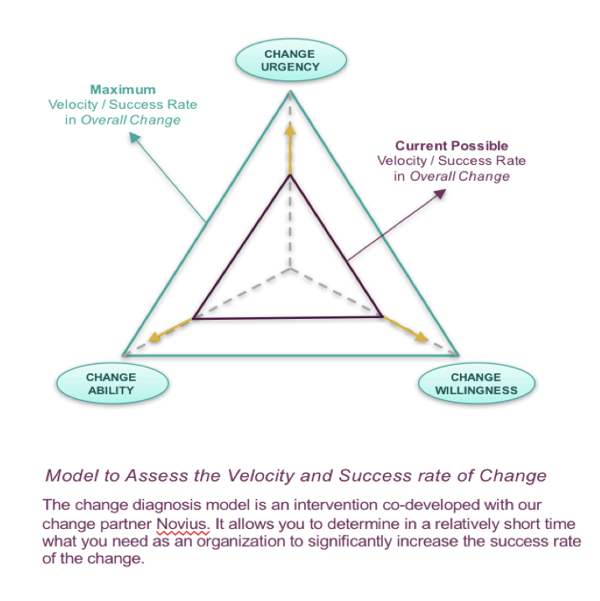The transformation of an organization into an agile one requires a carefully planned strategic approach. The success or failure of a transition towards greater speed, agility, and flexibility depends on organizational structure, collaboration style, and communication. Another requirement for success is support from the highest level. In the end, the goals of the transformation should be clearly communicated to the entire organization.
This 3-step approach ensures the required elements are in place for a successful agile transformation:
1. Perform an agile transformation scan focused on maturity criteria
2. Co-create an agile transformation outline
3. Initiate an organization-wide, co-creative process
- The agile-transformation scan
This preliminary step evaluates an organization’s capability to transform and determines its current agile maturity. The agile maturity part of the scan,quantifies and analyzes particular criteria to identify any discrepancies between the company’s current state and its agile ambitions. The second part of the scan provides insight into the expected velocity of transformation and its chances for success. Recommendations are then made based on these results and shared with the leadership team.
Concurrent to the scan, the leadership team and affiliates attend “deep-dive” workshop sessions that cover the five essential elements of the agile-transformation process as it specifically relates to their organization. These include:
. Leadership and culture
. Product and services
. Structure and way of thinking
. People and growth
. Technology
These deep-dive sessions ensure that everyone reflects on the scan results from a shared, collective framework and knowledge of agile.
- Co-creation of the agile transformation
The second step in starting a successful agile transformation takes place during a multi-day workshop program explicitly facilitated for the leadership team. Working with consultants who are experts in agile methods, techniques, and implementations, the team members exchange knowledge to co-create an agile transformation outline. This process allows everyone to clarify the overall vision, targets, and concerns while creating a transformation scenario that is unique to the organization. Afterward, they leadership team is better prepared to articulate the details of the transformation to employees and other stakeholders. This process is critical, as it establishes a base that benefits all future feedback loops relevant to the agile transformation.
- Communication and initiation of organization-wide, co-creative process
In the last stage of the 3-step strategy, the transformation outline is communicated to initiate the co-creative process with the rest of the organization. This step involves setting up company-wide feedback loops the leadership team can use to share the results with fellow employees and other stakeholders. These should take place over multiple session in smaller groups to optimize feedback conditions. This step serves to inspire the entire company while providing the opportunity to ask and answer any questions. The feedback results are then used to adjust plans and determine next steps.

Starting together
Confronting the initial challenges of an agile transformation can feel like diving into the deep end. However, with knowledge of this 3-step strategy and guidance from expert agile consultants, leadership teams can prepare for their organization’s transformation and approach it with confidence and knowledge.
Want to know more about the next steps in Agility? Download  and start your personal change tomorrow.
and start your personal change tomorrow.
This article is also published at ITExecutive - https://itexecutive.nl/management/succesvol-agile-transformeren-in-drie-stappen/






